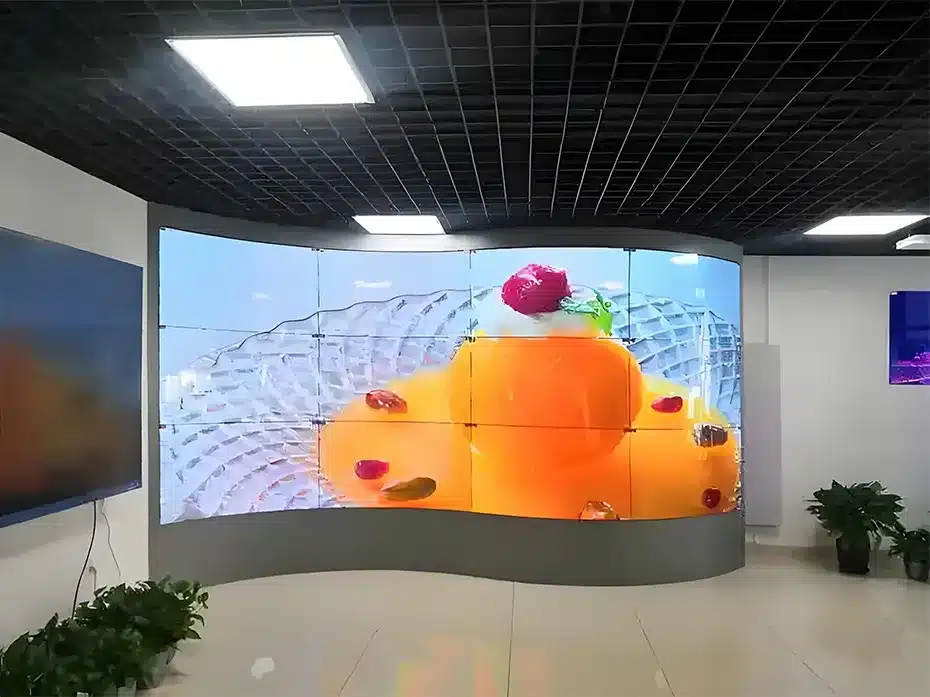
OLED Flexible Screens: The Future of Display Technology & A New Era of Visual Excellence 🚀
With cutting-edge advancements in display technology, OLED flexible screens are emerging as game-changers in the industry. From smartphones to automotive displays, wearable devices, and commercial signage, OLED flexible displays redefine user experience with unparalleled flexibility, color accuracy, and energy efficiency.
1️⃣ What is OLED Flexible Screen Technology?
OLED (Organic Light-Emitting Diode) is an innovative self-emissive display technology that has revolutionized the industry by eliminating the need for backlighting.
🔹 How It Works
OLED pixels emit light individually when an electric current passes through them, producing vibrant colors, deeper blacks, and ultra-high contrast.
🔹 What Makes OLED Flexible?
Unlike traditional LCDs, OLED flexible screens use polyimide (PI) substrates instead of glass, enabling bending, folding, and curving while maintaining high performance.
📌 Core Features of OLED Flexible Screens
✔️ Thin & lightweight – Perfect for portable and wearable applications.
✔️ Vivid colors & high contrast – Superior image clarity and deep blacks.
✔️ Flexible & foldable – Can bend, fold, or roll, making futuristic designs possible.
✔️ Energy-efficient – Consumes less power, increasing device battery life.
✔️ Wide viewing angles – No color shift or distortion from different angles.
With its ability to adapt to various designs and applications, OLED flexible screens are driving a new era of digital displays.
2️⃣ Advantages of OLED Flexible Screens Over Traditional Displays
📌 1. Ultra-Flexible & Bendable
🔹 OLED screens can be curved, folded, or even rolled without breaking.
🔹 Enables innovative, futuristic designs in consumer electronics.
📌 2. Thinner & Lighter
🔹 50% thinner than traditional LCD panels.
🔹 Enhances portability and mobility, perfect for wearables & foldable devices.
📌 3. Stunning Visual Performance
✔️ Self-emissive pixels → No backlight needed, resulting in deeper blacks & higher contrast.
✔️ Color accuracy → Wider color gamut (DCI-P3, HDR10+ support).
✔️ Higher brightness levels → Ideal for outdoor and commercial use.
📌 4. Energy Efficient & Eco-Friendly
🔹 OLED pixels only light up when needed, reducing power consumption.
🔹 Improves battery life on mobile devices and wearables.
📌 5. Wide Viewing Angles
🔹 No color degradation when viewed from the side.
🔹 Perfect for large-format displays and public installations.
3️⃣ How to Choose & Maintain an OLED Flexible Screen?
📌 Selecting the Right OLED Screen
When buying an OLED flexible display, consider these key factors:
✔️ Brand & Reputation – Trusted brands offer higher durability & better performance.
✔️ Resolution & Pixel Density – Higher resolution provides sharper images.
✔️ Brightness & Contrast – Essential for outdoor visibility.
✔️ Color Gamut & HDR Support – Ensures rich, immersive visuals.
✔️ Refresh Rate – Affects motion clarity, ideal for gaming & videos.
📌 Maintenance Tips for Longevity
✔️ Gentle Cleaning – Use a soft microfiber cloth and OLED-safe cleaner.
✔️ Avoid Extreme Bending – While flexible, excessive force can cause damage.
✔️ Protect from Moisture & Sunlight – Prevents screen burn-in & degradation.
✔️ Regular Performance Checkups – Monitor color accuracy & pixel performance.
By choosing high-quality OLED flexible screens and maintaining them properly, users can extend their lifespan and ensure optimal performance.
4️⃣ Future Applications & Industry Trends
🚀 OLED Flexible Displays are Transforming Industries
✔️ Smartphones & Foldable Devices – Samsung, Apple, and Xiaomi are integrating foldable OLEDs into next-gen smartphones.
✔️ Wearable Technology – Smartwatches, fitness bands, and curved smart glasses.
✔️ Automotive Displays – Advanced dashboard screens & heads-up displays (HUDs).
✔️ Smart Homes & IoT – OLED-integrated mirrors, furniture, and home appliances.
✔️ Commercial Signage & Billboards – Curved, transparent, & rollable screens for advertisements.
✔️ Medical & Healthcare – Flexible screens for portable diagnostic devices.
📌 The Future of OLED Flexible Screens
🔹 AI-Integrated OLEDs – Smart adaptive brightness & real-time content optimization.
🔹 Transparent OLED Screens – Augmented Reality (AR) & interactive displays.
🔹 Ultra-Durable OLED Panels – Scratch-resistant & waterproof advancements.
🔹 Cost Reduction & Mass Production – Lower manufacturing costs will drive mainstream adoption.
💡 By 2030, OLED flexible displays will be the standard for premium digital screens across all industries!
🔮 Final Thoughts: The OLED Revolution is Just Beginning!
OLED flexible screens are not just a trend—they are the future of display technology! 🌍
✔️ Better design freedom for next-gen devices.
✔️ Improved visual performance with HDR & high refresh rates.
✔️ Energy efficiency reducing power consumption & environmental impact.
💬 What are your thoughts on OLED flexible screens? Will they replace traditional LCDs in the future? Comment below! 🚀